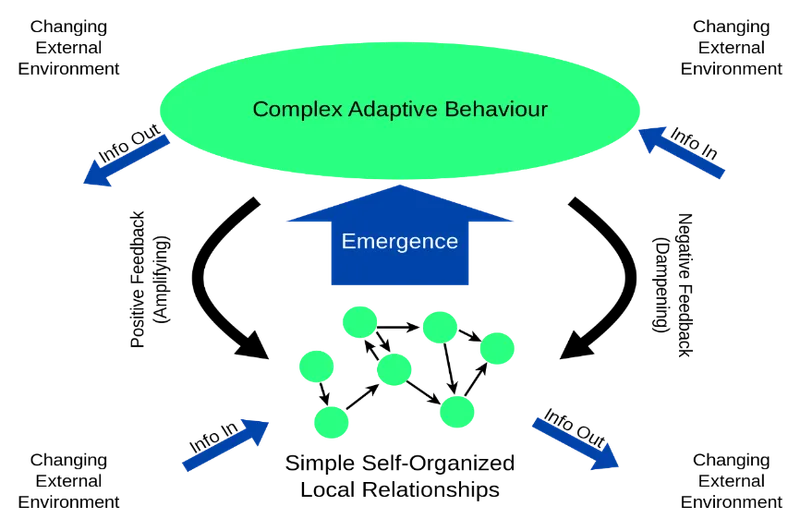What does it take to lead a living, breathing, and agile enterprise?
Today’s leaders face a new reality thanks to the unstoppable environment of constant disruption. To face this unprecedented challenge, global business leaders need holistic agility at the enterprise level.
Today’s VUCA (Volatility, Uncertainty, Complexity, and Ambiguity)-characterized environment forces a new perspective forward – a recognition of enterprises as agile, living systems, ones that sense, respond, and adapt to changes in their environment. Their most critical components aren’t standardized machines but feeling, thinking, creative, and curious people. Such systems are subject to natural evolution and necessitate high levels of agility to stay empowered.

Re-infusing ‘life’ into enterprises
Michelle Holiday, president of Cambium Consulting, asks, “Why does a flat, networked organization now seem the better choice...? Why do we need to engage customers in meaningful conversation...? The answer is...a move in the direction of resilience, adaptability, and creativity. Traditional mechanistic modelling of enterprises stifles agility, making it necessary to free the enterprise and bring the business back to life.
Complex Adaptive Systems (CAS), a proven model of high agility
The challenges of environments becoming highly dynamic, interconnected and unpredictable might be new in the context of business, but they are widely prevalent in life and social sciences.
Prominent examples are humans, ecology, the global macroeconomic network within a country or group of countries, social insect colonies, and any human social group-based endeavour. These systems are better known as Complex Adaptive Systems (CAS). Most importantly, these systems have demonstrated a pattern of evolving, adapting, and responding to change.
BusinessDictionary.com defines CAS as an “entity consisting of many diverse and autonomous components or parts (called agents) which are interrelated, interdependent, linked through many (dense) interconnections, and behave as a unified whole in learning from experience and in adjusting (not just reacting) to changes in the environment.”

CAS Characteristics
- Continuous evolution: A CAS significantly improves its ability to survive because it can adapt.
- Autonomous and self-organizing agents: Agents have the autonomy to reorganize as they see fit and can respond quickly to change.
- Variety is a source of strength: Contradictions and uncertainty create new possibilities to evolve with and/or adapt to the environment.
- A non-linear relationship between cause and effect: Small changes can have a surprisingly profound impact on overall behaviour, or contrarily, a huge upset to the system may not affect it.
- Effectiveness over efficiency: Open systems rely on having rules that are simple so that they can be more effective.
Implication for Enterprises
- Enhanced agility: Be hyper-aware of your environment so you can spot important trends quickly. You need to be agile so you can react.
- Responsive structure: Your organization’s structure should support autonomous, decentralized, and outcome-oriented teams.
- Cultivate diversity: Diversity of people (gender, ethnicity, education, and experience) and thought will introduce new perspectives and deliver greater value.
- Shorter feedback loops: Feedback loops across the enterprise need to be short, frequent, and across every level.
- Experiment with lever points: Actions which are inexpensive but lead to significant positive outcomes are called lever points. They can be identified through experimentation or learned based on patterns of empirical evidence.
- Prioritize effectiveness over efficiency: Your culture needs to be learning and knowledge-driven so your employees can effectively adapt and respond to the fast-changing environment.
The New Paradigm of Leadership
But it’s not just an organization that needs to change. The characteristics of good leadership are changing too. Kevin Cashman, the author, speaker, and pioneer in executive development, talks of the five dimensions that are crucial for agile leaders:
- Mental agility: Thinking critically to penetrate complex problems.
- People agility: Understanding and relating to other people, as well as tough situations, to harness and multiply collective performance.
- Change agility: Enjoying experimentation, being curious, and effectively dealing with the discomfort of change.
- Results agility: Delivering results in first-time situations by inspiring teams and exhibiting a presence that builds confidence in themselves and others.
- Self-awareness: Being reflective, knowing themselves well, understanding their capabilities, and being aware of their impact on others.
In effect, leadership traits needed to lead a 21st-century enterprise will have to be very different.
Sunil Mundra is Principal Consultant at ThoughtWorks.
(Disclaimer: The views and opinions expressed in this article are those of the author and do not necessarily reflect the views of YourStory.)











